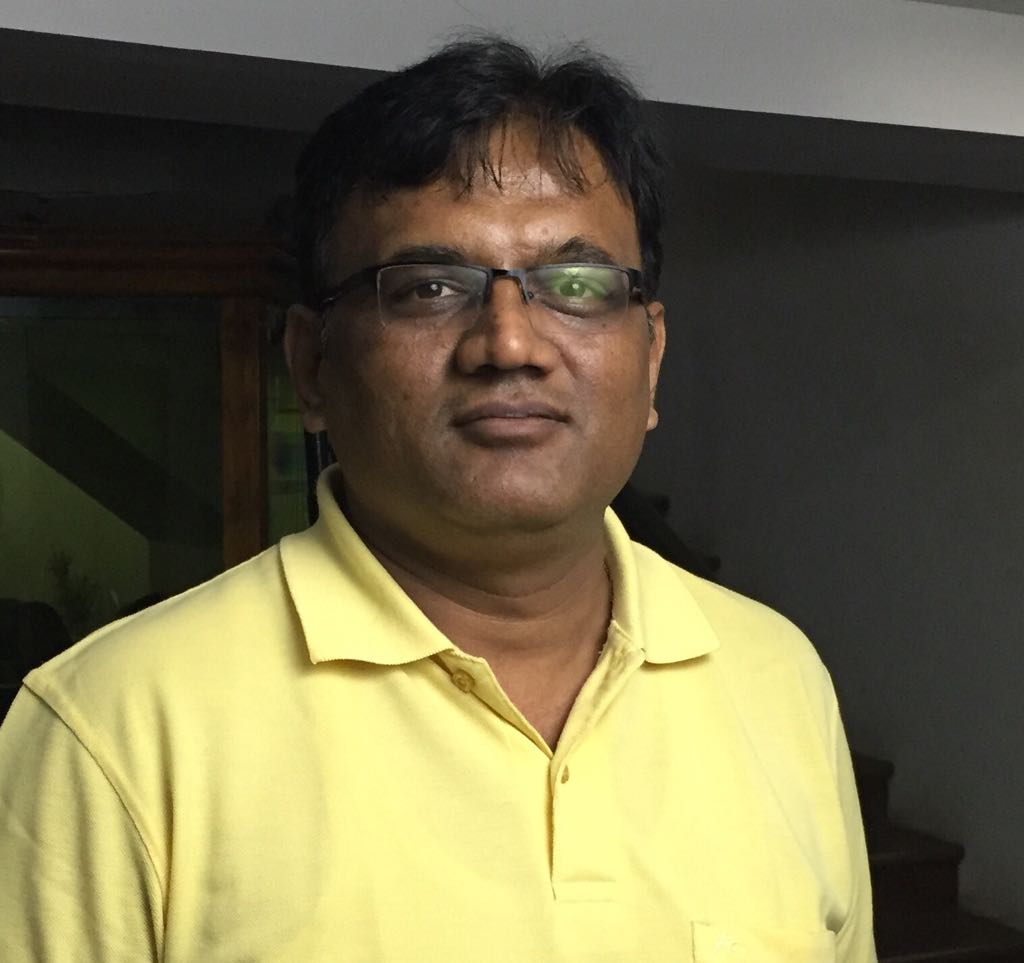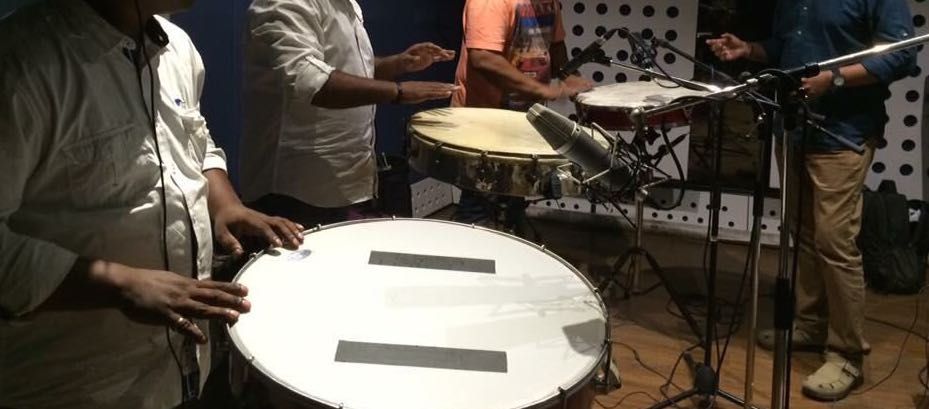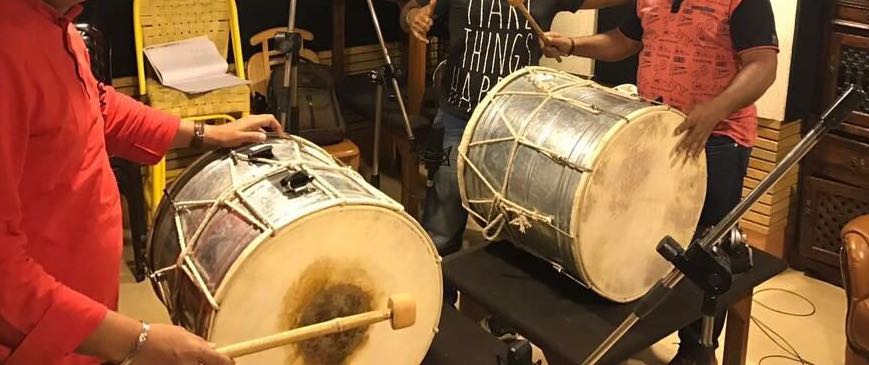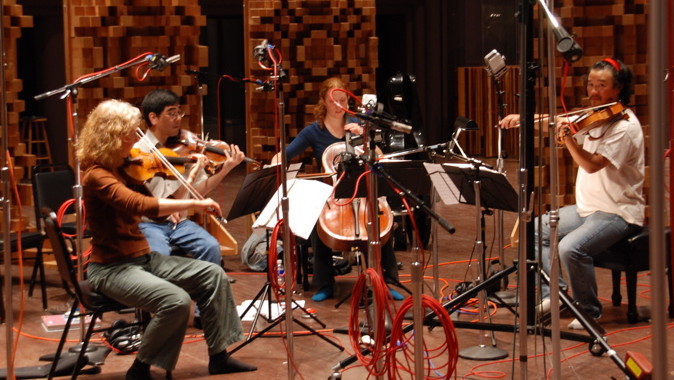Pramod Chandorkar - Founder, SoundideaZ Academy

Recording & Microphones
Chandorkar offers expert tips on achieving a good recording with details about room dynamics, good microphones and their placement, and more.
Part 2
Recording Duff and Dhols
Indian percussions have a large variety of sounds. We have these sounds changing as per the region they belong
to. For example the Dhol, which while played in Maharashtra, sounds completely different than the Dhol,
we hear from Punjab. Though both the instruments are called Dhol but the construction, skins and style
of playing varies. Its important that we should understand the style with which a specific instrument is
being played before we decide to record it. As a recording engineer you should take effort to spend some
time listening to the raw sound of the instrument when the musicians are doing rehearsals. Unless you know
the raw sound well its difficult to get a good-recorded sound.
Instruments played by sticks like Dhol, duff, Chanda, Tasha etc. are very loud in nature. First we should
identify the nature of the sound like a Dhol is used to create the low energy with an attack on the hit
or the Tasha is used for the rattling sound in the high Mids. This information helps us to decide the kind
of microphone we should use for recording them.
One important tip I would like to share is you will never get the right sound of these instruments if you
end up doing a spot micking to them. These instruments are loud in nature and they need room for them to
sound natural. I remember that for one of the popular song, we ended up recording 10 dhols and Tasha in
a silent space, which was open air. That gave us the exact sound we were looking for. If you have a small
room with very limited height and you intend to get the right sound from these instruments you will have
to be creative to capture the ambience sound while thy are played.
In one more session when I was recording them in a small studio I ended up keeping the Studio door open and
putting one Mic in the Lobby, which was very reflective and the combination of lobby Mic and studio Mic
gave a me a great sound.

Bottom line is you should be creative and then there would be no limitation for experimenting.
Generally I would place a U 87 almost 3-4 feet away from a Dhol in the center and add two KM 184 on a
height to capture the room.
For a duff I would use a Condenser Mic at about 2 feet from the top and incase I need to capture the Low
sound I would add an SM58 from the bottom with a distance of 8-10”. Keep in mind the phase when using Mics
like this.
Recording Backing Vocals (Chorus Sections)
Though this was covered in the previous issue, I thought of some more points to cover in this part
Good Recording of a group of singers together is a far difficult task than imagined. The most common practice
used is to put 2 or 4 mics and let the singers adjust themselves. But it does not yield the best results
always. It’s very important to ensure that the totality sounds as a group. To ensure that you should make
you’re self aware of the individual tones of the singers in the session. You can get to know that when you
attend the rehearsal. You can note the loud voices and specifically voices which stand out in the
group.
Ideally I would make a male and female voice section separate in the same room then depending on the number
of singers decide the number of microphones. Generally with a condenser Mic like AKG414 on a Omni pattern,
I would accommodate 4-6 vocals making a circle. If space is an issue you can use a cardioid pattern and
place them on one side. When we are doing stacking its important to ensure that the distance from the
microphones is changed for each take. We tend to do multiple tracks of the same part of music; during
this if you change the vocalist positions and distance from the microphone it will give you a very
interesting sound of group vocals. If the part is really high and loud ensure that the singers step back
and belt it out. This distance take will capture a lot of room and add life in to a track.
Bottom line is again experimenting to get the right sound. Close mics don’t work always. It has to be the
right combination of close and distant mics . Also I would never use an EQ while recording. I would want
to achieve the tonality by microphone placement. I would use a compressor just to ensure that I am not
peaking.
Recording Strings Section
Recording good Strings Can be the Most rewarding and satisfying experience for a Sound engineer. The factors,
which affect a good recording, are too many to consider.

Define the Space
Figure out where the strings will be in the mix, and the tracking will fall into place. Are the strings up
front and bold, or are they providing a backdrop? If you are going for a “soul style” string section, you can
place the string overheads surprisingly close to the players, because you may want the heavy harmonics and a
sense of “in-your-face.”
For classical inspired rock, your power is really going to come from the guitars and drums. You’d be surprised how
far you can place the string overheads because the strings are meant to create width and — and not fight with the
power instruments.
With an orchestra, you will probably have both a close overhead set and a far room capture as you want both power
and depth from your ensemble. Figuring out the strings role, and spatial relevance is half the battle.
Microphones
Essentially, choosing the mikes is about that which fits the role best. Ribbons and Condensers can both sound
fantastic on any string set with the right placement. It’s more about what kind of image you want.

If the Strings are a part of strings in the background, I’m going to reach for a set of ribbons. I want a
lot of space, but not necessarily a lot of room, if that makes sense. And that ribbon tone seems connotative
of that rock sound.
For Upfront Sound, I’m going for some condensers, set as cardioid, because I want those buzzing harmonics. For
classical, I want some Omni condensers — a pristine capture with the sound of the hall equally involved.
Remember, these are just starting points. You may find that you’re getting results that don’t match up with
expectations and that means figure out what you want and making adjustments.
Phase is a complex thing when it comes to strings. With all those harmonics hoping around, it’s practically
impossible to get a spaced pair to have perfect phase. Perfect phase on a string ensemble of any size is
impossible.
A spaced pair, even from an imaginary center point, will always leave some strings in phase and some strings
out — and the harmonics will alternate between in phase and out of phase. But don’t worry! There’s an
advantage to an out of phase capture: a wider stereo image.
So how does one get a wide stereo image and keep a solid mono sound? Two ways.
One is to set up an XY or ORTF configuration. The sound all reaches the mics at essentially the same time,
so you stay safe. Another technique is to use a third “glue” mic. Your stereo pair might never be in phase
with the strings, but they can be in phase with a third, omni directional mic. If you place that mic somewhere
that seems to gather the whole ensemble sound evenly it will help the stereo pair feel concentric. And, when
you fold to mono you won’t lose the sense of evenness of the entire ensemble. Usually this glue mic sounds
like crud in solo. It’s meant to be tucked underneath the stereo pair, which is doing the majority of the work.
The more glue mic you can get (or conversely less of the stereo pair) while still keeping an acceptable sense of
width and tone, the better your mono fold will be. There’s usually a sweet spot that makes everything happy.
Finally The Bottom Line Is Experimentation is the Key. Only a good writing can lead to a good recording and
eventually a great sounding Mix.
Happy recording.